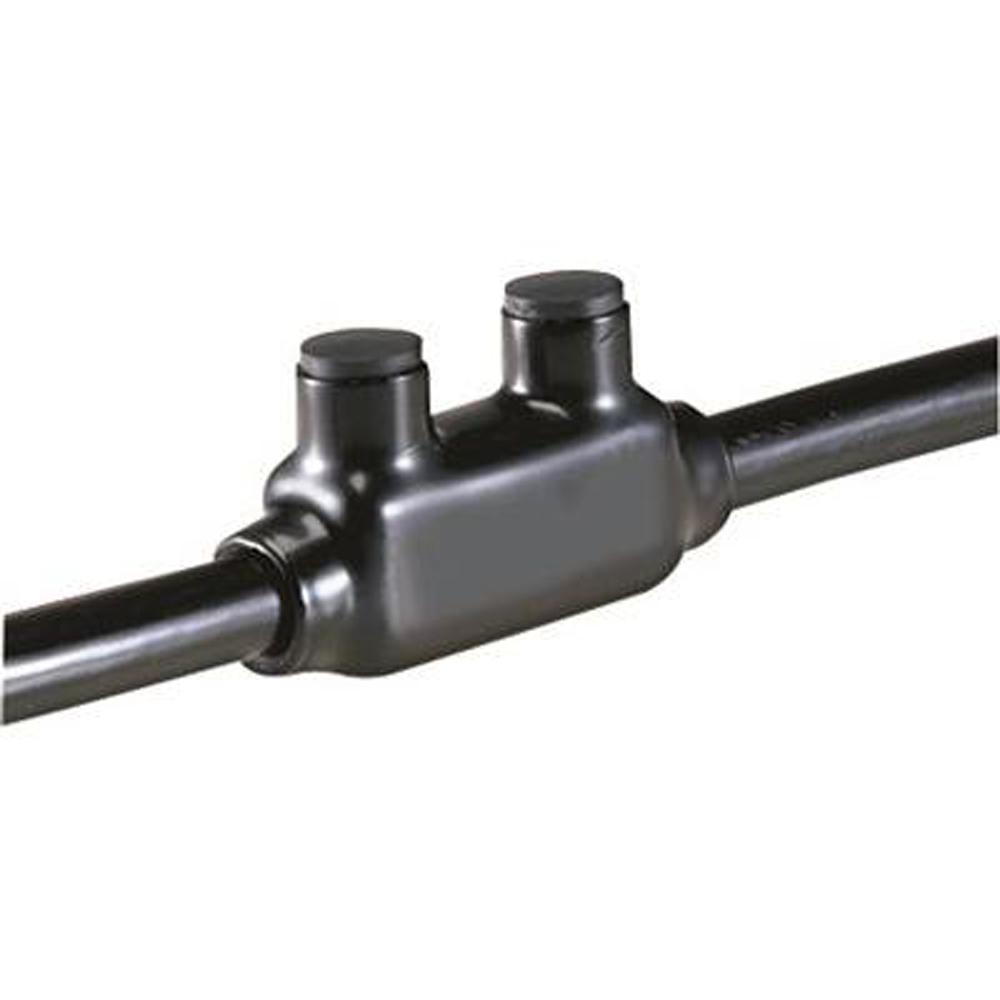
- #Entry wire underground splice kit update#
- #Entry wire underground splice kit pro#
- #Entry wire underground splice kit code#
- #Entry wire underground splice kit plus#
- #Entry wire underground splice kit free#
#Entry wire underground splice kit update#
Here are a few more annotated pictures and an update schematic of the proposal: This would make the conduit run pretty straight forward and would eliminate the need to run any SER at all and I could just run the 1-1-8-8 directly from the main 200A panel to the sub-panel. It seems like it would be pretty easy to replace this with 2" conduit, add a T-type conduit body and run the conduit up the left side of my yard either attached to my fence, the concrete drainage skirt, or I could trench the whole thing (manual labor is not a problem) any suggestions on best route? Also, I can run under the keystone wall and bring it up which would be aesthetically pleasing, but would definitely be some grunt work. There is a very small run of conduit that exists that feeds my septic controller's data lines (ethernet).

Thanks again to efforts of ThreePhaseEel and Harper and all their suggestions, I took a step back this weekend to look over the conduit plan and seems like I may have found a better way. This may be a stupid question but, can't I just feed the copper through the piece at hand and cement what I need to together as I go? Seems like this would be easy and the longest "pull" would be a 10ft straight stick? Or is the suggested method to run all your conduit, then pull the copper through? If I go with copper can I downsize the suggested aluminum sizes or should I stick with the same AWG but just go copper?ģ) I keep hearing about it being a pain to pull the copper through the conduit. Truthfully, if there is any doubt I'd rather just pay the bit extra and go with copper. Anyone care to review it a bit?ġ) When running the conduit how do you take care of lots of 90° bends? Just use Type-LB conduit bodies at every 90°? Also, when running along the side of house to replace the existing LFMC, how do you account for that small ~1" step down down along the run? Space the conduit off of the wall? (See pic 2 above)Ģ) I am worried about the amount of debate if aluminum vs copper conductors. Ok, with the suggestions from everyone, especially ThreePhaseEel and Harper.

Does this work seem feasible for a decently advanced DIY-er? Is there anything obviously missing from this plan?įull Res - Annotated Album of Project Outline I realize the copper alone will be significant but this still seems pretty high to me. I got a quote for this work (I would dig the trench) and it came out to $4,800 + permit and inspection costs. For receptacles in a NEMA box, do they need to be GFCI?.What size conduit can I use to run and bury this portion of the run?.How deep does this trench need to be? (guessing 18").From the sub-panel, run 8/3 and 12/2 underground, which will come out to a NEMA box that will house a single 14-50 receptacle, the JuiceBox, and a single gang outlet.I may consider wiring out some lighting as well but that's a secondary thought at this point.

#Entry wire underground splice kit plus#
Can I even use the existing liquid tight (what dimension does it need to be to run the existing conductor plus the added 3-3-3-5 SER)?.Run ~75' of 3-3-3-5 SER from my main panel through the existing crawl space/liquid tight then run additional liquid tight from a junction at the AC unit, under the stairs, to the sub-panel.Also, please see the pictures for reference. This project is in Unincorporated Santa Cruz County.
#Entry wire underground splice kit free#
Here are my initial thoughts - please feel free to provide guidance here. I already have 240V running about half way from my 200A main panel to my AC unit through a crawl space then some liquid tight. Then leave some room for what will most likely be a Tesla Charger in the future.
#Entry wire underground splice kit pro#
I want to run a 100A sub-panel up to my driveway and wire up a 240V JuiceBox Pro 40 and a few 120V standard outlets. I recently got a plugin-hybrid and I'm expecting to pick up a second one soon.
#Entry wire underground splice kit code#
My real worry is staying to code and not doing anything stupid.

I have a good grasp of mechanical and electrical systems and am fairly confident in my work. I have been working on and around just about everything since as long as I can remember. I am an Electrical Engineer by schooling and I'm a pretty handy guy overall.


 0 kommentar(er)
0 kommentar(er)
